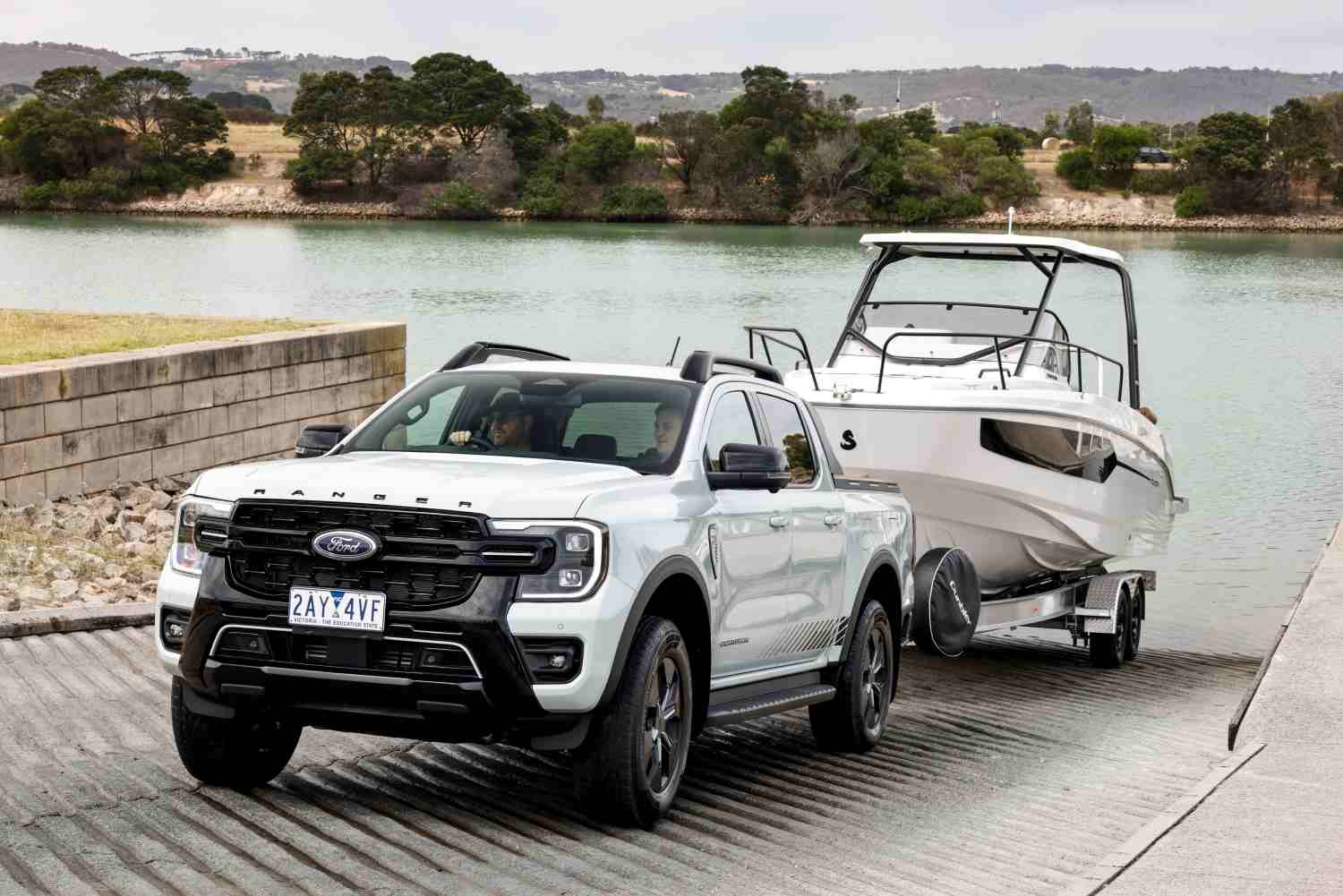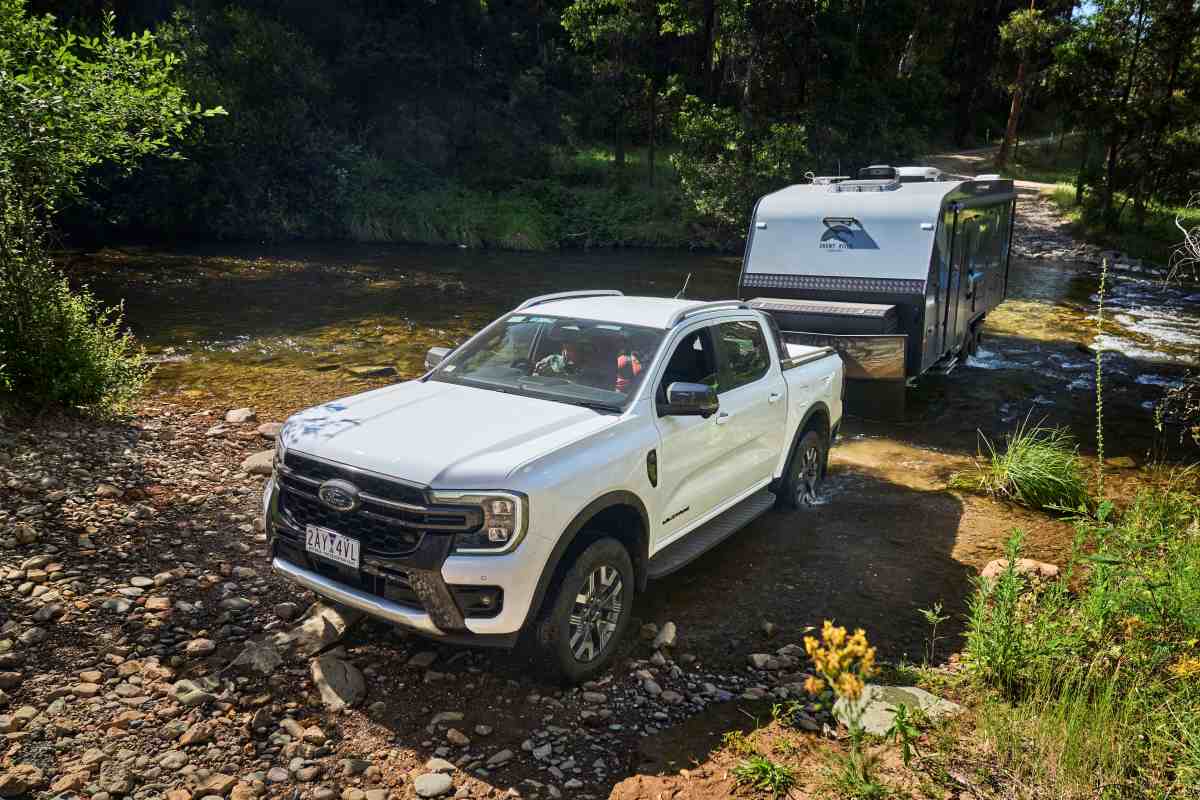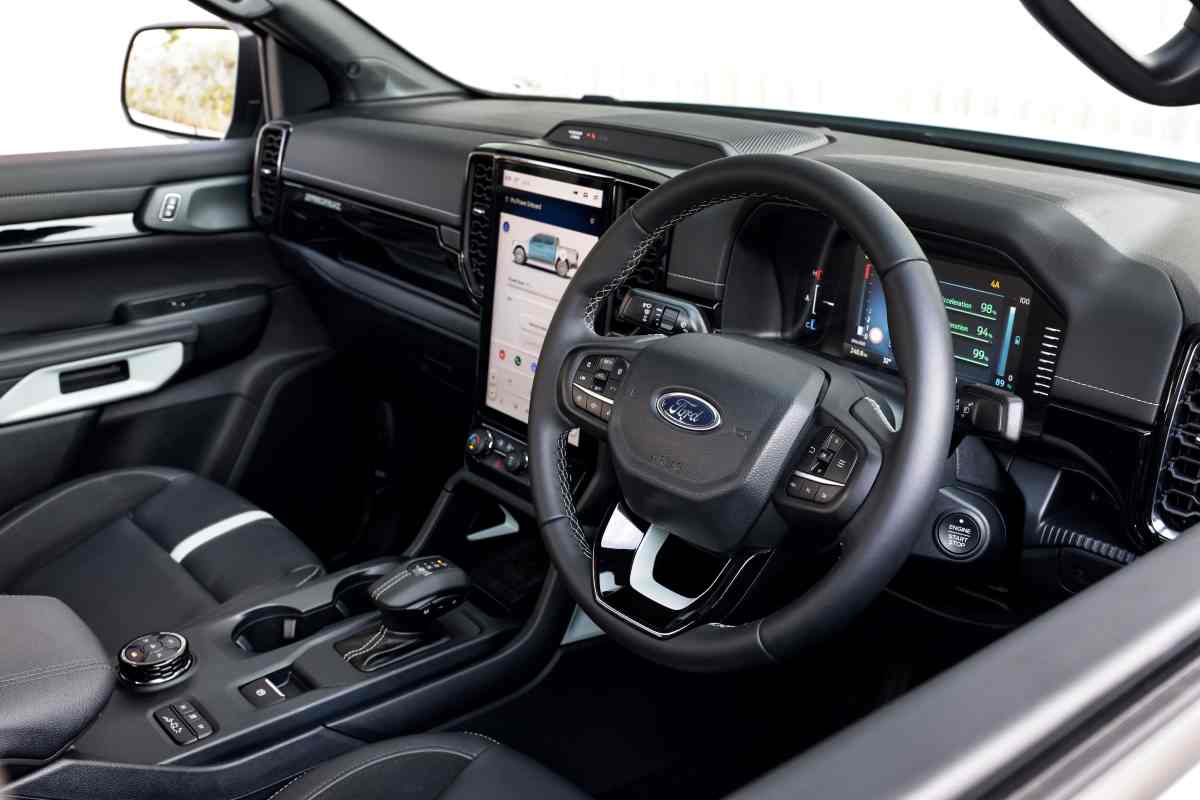Advertisement
Advertisement
Ford Australia has pulled the covers off the pricing and specs for the much-anticipated Ranger PHEV (Plug-In Hybrid Electric Vehicle), set to hit our roads mid-year. With four variants to choose from and a starting price of $71,990, it’s officially the first-ever electrified Ranger, and it’s ready to shake up the dual-cab ute market.
Packing a 2.3L EcoBoost turbo petrol engine, a 75kW electric motor, and an 11.8kWh battery, the Ford Ranger PHEV delivers 207kW and 697Nm – more than enough grunt for towing, off-roading, and daily duties. Despite all that power, it (reportedly) sips fuel at just 2.9L/100km, making it the most fuel-efficient Ranger yet.

Coming in a little cheaper than originally forecast, it will still hit heavier on the wallet when it hits Australian showrooms than its PHEV ute rivals, the BYD Shark 6 and GWM Cannon Alpha.
Here’s what the new Ford Ranger PHEV will set you back.
| Variant | Price (MLP Inc. GST) |
|---|---|
| Ranger PHEV XLT | $71,990 |
| Ranger PHEV Sport | $75,990 |
| Ranger PHEV Wildtrak | $79,990 |
| Ranger PHEV Stormtrak | $86,990 |
Ford insists the Ranger PHEV is still every bit a tough ute. It keeps its full-time 4WD system with a mechanical transfer case, has a 3,500kg braked towing capacity, and offers 973kg payload – more than any other plug-in hybrid dual-cab on the Aussie market. Even better, Ford has squeezed in a longer tray that can fit two European-sized pallets.

Not keen on overthinking how your ute’s powertrain works? No worries. The Ford Ranger PHEV’s four EV drive modes let you decide how much electric juice you want to use.
One of the coolest features of the Ford Ranger PHEV is the Pro Power Onboard, a built-in 6.9kW power supply. With a 10A cabin socket and two 15A tray sockets, you can run tools, charge batteries, or even power a caravan. All of this without needing a generator. Ford reckons it’s like having a powered caravan site with you wherever you go.
Ford knows towing is a big deal for Ranger buyers, so they’ve made sure this PHEV still pulls its weight. Literally. Whether it’s launching a boat at the ramp or dragging a trailer up a steep incline, Ford says the extra torque from the electric motor means getting off the line is effortless. Plus, the integrated trailer brake controller and Pro Trailer Back-Up Assist make life easier when reversing with a load.
| Spec | Value |
|---|---|
| Towing Capacity (Braked) | 3,500kg |
| Payload (XLT) | 973kg |
| Gross Vehicle Mass (GVM) | 3,500kg |
| Gross Combined Mass (GCM) | 6,580kg |

Ford is pitching the Ranger PHEV as the hybrid ute that lets tradies, tourers, and off-roaders start their EV journey without losing capability. Ready or not, the hybrid ute era has arrived, and with massive torque, low running costs, full 4WD, and a built-in power source, Ford is making sure its entrance is not a boring one.
| Series | PHEV XLT | PHEV Sport | PHEV Wildtrak | PHEV Stormtrak |
|---|---|---|---|---|
| Body | 4×4 Double Cab Pick-Up | 4×4 Double Cab Pick-Up | 4×4 Double Cab Pick-Up | 4×4 Double Cab Pick-Up |
| Engine | Plug-in Hybrid 2.3L EcoBoost | Plug-in Hybrid 2.3L EcoBoost | Plug-in Hybrid 2.3L EcoBoost | Plug-in Hybrid 2.3L EcoBoost |
| Engine Max Power | 138kW @ 4600 RPM | 138kW @ 4600 RPM | 138kW @ 4600 RPM | 138kW @ 4600 RPM |
| Engine Max Torque | 411Nm @ 2700 RPM | 411Nm @ 2700 RPM | 411Nm @ 2700 RPM | 411Nm @ 2700 RPM |
| E-Motor Power | 75KW | 75KW | 75KW | 75KW |
| System Max Power | 207kW @ 4600 RPM | 207kW @ 4600 RPM | 207kW @ 4600 RPM | 207kW @ 4600 RPM |
| System Max Torque | 697Nm @ 2500 RPM | 697Nm @ 2500 RPM | 697Nm @ 2500 RPM | 697Nm @ 2500 RPM |
| Battery (Usable) | 11.8kWh | 11.8kWh | 11.8kWh | 11.8kWh |
| Transmission | 10-speed auto modular hybrid | 10-speed auto modular hybrid | 10-speed auto modular hybrid | 10-speed auto modular hybrid |
| Selectable Drive Modes | Normal, Eco, Tow/Haul, Slippery, Mud/Ruts, Sand, Sport | Normal, Eco, Tow/Haul, Slippery, Mud/Ruts, Sand, Sport | Normal, Eco, Tow/Haul, Slippery, Mud/Ruts, Sand, Sport | Normal, Eco, Tow/Haul, Slippery, Mud/Ruts, Sand, Sport |
| EV Drive Modes | Auto EV, EV Now, EV Later, EV Charge | Auto EV, EV Now, EV Later, EV Charge | Auto EV, EV Now, EV Later, EV Charge | Auto EV, EV Now, EV Later, EV Charge |
| Combined Fuel Economy | 2.9L/100km | 2.9L/100km | 2.9L/100km | 2.9L/100km |
| Electric Driving Energy Consumption | 187Wh/km | 187Wh/km | 187Wh/km | 187Wh/km |
| Electric Driving Range | 49km | 49km | 49km | 49km |
| Fuel Tank Capacity | 70L | 70L | 70L | 70L |
| Fuel Type | Petrol, Min 91RON | Petrol, Min 91RON | Petrol, Min 91RON | Petrol, Min 91RON |
| Vehicle Charging | ||||
| * Max Charge Rate AC | 3.5kW | 3.5kW | 3.5kW | 3.5kW |
| * Estimated Charge Time 0-100% – 2.3kW (10A @ 230V) | 6 Hours 53 mins | 6 Hours 53 mins | 6 Hours 53 mins | 6 Hours 53 mins |
| * Estimated Charge Time 0-100% – 3.5kW (15A @ 230V) | 4 hours | 4 hours | 4 hours | 4 hours |
| Vehicle Masses | ||||
| * Gross Combined Mass | 6580 | 6580 | 6580 | 6580 |
| * Gross Vehicle Mass | 3500 | 3500 | 3500 | 3500 |
| * Front Gross Axle Weight Rating | 1490 | 1490 | 1490 | 1490 |
| * Rear Gross Axle Weight Rating | 2100 | 2100 | 2100 | 2100 |
| * Kerb Weight | 2527 | 2566 | 2615 | 2692 |
| * Payload (based on Kerb Weight) | 973 | 934 | 885 | 808 |
| * Maximum Kerb Weight | 2670 | 2695 | 2705 | 2705 |
| * Payload (based on Max Kerb Weight) | 830 | 805 | 795 | 795 |
| * Tare Weight | 2479 | 2518 | 2567 | 2644 |
| Exterior Dimensions (mm) | ||||
| * Length – without tow receiver | 5350 | 5350 | 5350 | 5350 |
| * Length – with tow receiver | 5386 | 5386 | 5386 | 5386 |
| * Width – exterior mirrors extended | 2207 | 2207 | 2207 | 2207 |
| * Width – exterior mirrors folded | 2015 | 2015 | 2015 | 2015 |
| * Width – excluding mirrors | 1924 | 1924 | 1924 | 1924 |
| * Height – to top of antenna base | 1871 | 1883 | 1878 | 1878 |
| * Overhang – front | 865 | 865 | 865 | 865 |
| * Overhang – rear | 1215 | 1215 | 1215 | 1215 |
| * Track – front and rear | 1630 | 1630 | 1630 | 1630* |
| * Wheelbase | 3270 | 3270 | 3270 | 3270 |
| * Ground Clearance (unladen) | 215 | 228 | 226 | 226 |
| * Wading Depth | 800 | 800 | 800 | 800 |
| * Approach Angle (unladen, degrees) | 28.9 | 30.1 | 30.2 | 30.2 |
| * Departure Angle (unladen, degrees) | 23.9 | 24.7 | 24.2 | 24.2 |
| * Ramp Breakover Angle (degrees) | 19.6 | 20.6 | 20.4 | 20.4 |
| * Turning Circle (meters) | 12.9 | 12.9 | 12.9 | 12.9 |
| Wheels and Tyres | 17″ Alloy with All-Season Tyres | 18″ Alloy with All-Season Tyres | 18″ Alloy with All-Season Tyres | 18″ Alloy with All-Season Tyres or All-Terrain with matching spare |
| Maximum Braked Towing Capacity (kg) | 3500 | 3500 | 3500 | 3500 |
Nice article Jessica. Not a political piece on climate change and the evils of combustion engines. I love it.
Keep them rolling. Batteries belong in phones😅
Interesting for the politically correct maybe, even a move in the right direction.
But, in Australia all but useless outside city limits. Any hybrid regardless of category requires a minimum EV only range around 200km to make meaningful every day use easy and longer distances economic.
If there is a genuine goal of moving to meaningful climate friendly power sources then in Australia only EV hydrogen hybrids offer a real transition technology. Hydrogen can immediately replace fossil fuels and later simply transition to fuel cells when that technology catches up. All of the asinine city bound pundits and others should read a book written FIFTY FIVE years ago called the Solar Hydrogen Alternative by Bockris everything else is ill considered BS.
I live in a rural setting and to go for a small shop is 150km return and a full shop is 230 to 250 km return; 50km will not cut it.
One local source of entertainment is when the power goes down is to go down the street and watch Tesla drivers almost panicing that the charging station is dead. Really sad.
So all we really want to know is :
Does it have 33s
Does it have a snorkel (can one even work with this technology )
what’s the wading depth???
T least you did say it has full time 4wd
What’s the range?
I like the way I can run my fridge ( that is a game changer).
Love that it has a built in battery for my fridge.